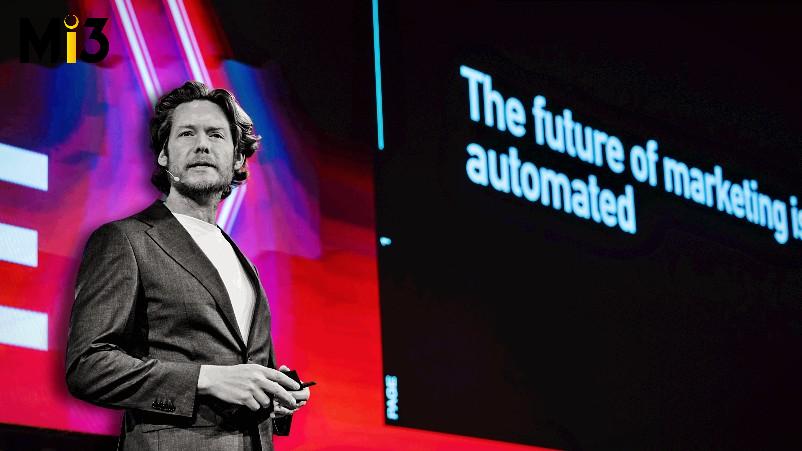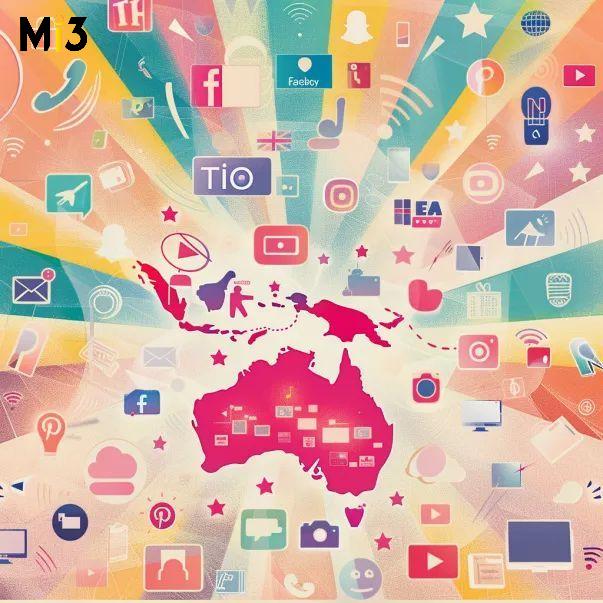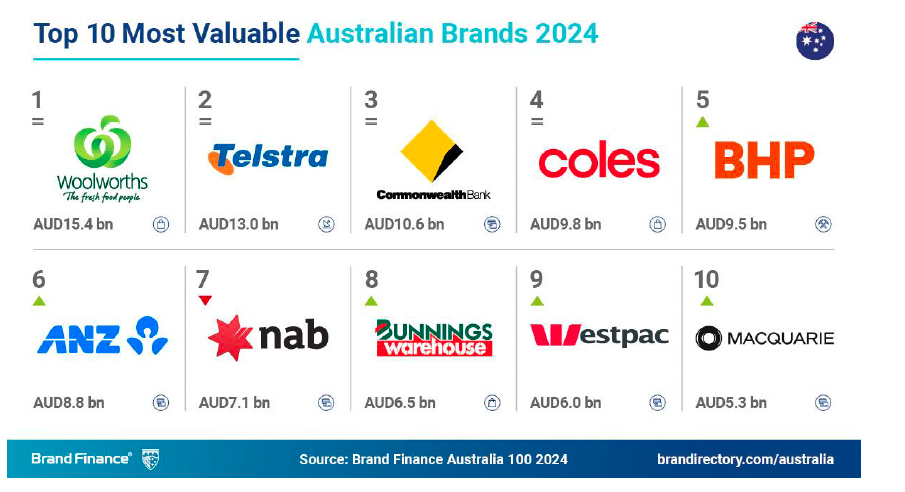Ex-Publicis, Havas, IPG exec turned ‘futurist’ Tom Goodwin skewers AI–agentic commerce hype, but warns ‘robotic’ marketers and agency staff risk automation; Salesforce SVP & CMO, ANZ bites back

AI may well automate the marketer, agency and publisher staff that have followed the platform playbook on attribution and measurement minutiae. But those forecasting rapid web-wide expansion of agentic commerce agents are wide of the mark, per “practical futurist” Tom Goodwin. Others, like Salesforce SVP & CMO, ANZ Leandro Perez strongly disagree. Either way, Goodwin suggested marketers that have painted themselves into an attribution/performance-focused corner may be first against the wall. But, he mooted, widespread upheaval may be further off than many fear.
[By obsessing with attribution and averages] we're training ourselves to be more robotic … So if AI does our jobs, it’s because we made our jobs really stupid and removed all the human elements from them.
Mixed messages?
Goodwin, a former Publicis, Havas, IPG, Huge and Lowe exec turned author, consultant and conference circuit mainstay, told ADMA’s Global Forum delegates both not to panic, but also to recognise that media, marketing and advertising risks plotting its own downfall.
Firstly, by trying to attribute everything while diving headlong into the platforms’ performance trap. That approach has led some of the best consumer marketing companies of all time to throw out the brand baby with the bathwater, per Goodwin.
“We’ve got people like Unilever talking about [flipping billions of dollars, literally half of its budget into] influencer marketing. We’ve got people like P&G talking about the need to have one-on-one conversations at scale. For me – and people will disagree – this makes no sense. I don’t want to have a conversation with Head & Shoulders.
“At the same time, [mass reach] traditional media owners … are being persuaded to do the digital stuff, persuaded to ‘close the loop’, to show effectiveness, to show contextual placement. So, we have this very weird environment where everyone is trying to follow the performance playbook.”
Goodwin thinks platform-aping has played out particularly badly for traditional publishers (others would argue what choice did they have, faced with the outflow of dollars as media buyers and marketers made a handful of start-ups some of the world’s largest companies in under 20 years.)
“Over a trillion dollars a year is spent on advertising, but what we experience as a consumer is largely crap. If you actually open up The Guardian or the New York Times or the Sydney [Morning] Herald and you actually looked at the ads you are being served, this idea that advertising technology is working is just not true. We are surrounded by enormously irrelevant advertising.”
He says the platforms are not much better – but a generation of marketers and the supply chain have been schooled in what cannot be measured cannot be managed, attributed, nor credit claimed.
Hence, a “dangerous situation where people are getting obsessed with attribution and short-term impact, utterly obsessed with this idea that unless you can show success and claim impact, it doesn’t matter … obsessed with moving money toward the point of purchase … with this idea that we need to reach ever smaller audiences and that our whole job has become about conversion … obsessed with everything we can measure.”
Outside context problem
For a futurist, Goodwin is nostalgic about the roles brands once played. He cited Carlton Draught’s ‘Big Ad’ as one of the last of the line of advertising’s “first era”, where ads “were designed to create impact”.
“’Made from beer’ – whoever came up with that, I’d like to buy them a rosé,” per Goodwin. (Plenty of sharp minds involved, but send the Nebuchadnezzar to Melbourne’s Kerfuffle, launched a couple of months ago to be “a safe haven for the best creative minds in the country” at a time “where the industry is under threat from all angles”, QED.)
“Ads used to be big … Then the internet came along and changed the vibe somewhat towards efficiency … then we moved from efficiency to effectiveness … we started to get more data … and focus on the sort of science behind that … a sense of personalisation … And I think now we’re in this era of attribution. Since about 2022 onwards, all we really care about is not whether it is working but our ability to show we were a part of it ‘working’ – and we’re moving money to game the system slightly.”
He referenced searching for P&G’s Tide detergent on Amazon.com by way of example. “Type in Tide and you are surrounded about ads about Tide … Every single arrow here (see below) is pointing to an ad about Tide. Correct me if I am wrong, but I probably already wanted the Tide … Yet every single person making these ads thinks they are really good at their jobs. They think that every time they put an ad here, someone buys Tide – and that is what is happening [across the ad industry]: money is moving towards places where we can claim successful retail.”
(Salesforce SVP & CMO, ANZ Leandro Perez did correct him: “In the Amazon example, there they were actually different retailers competing against each other selling Tide – but he didn’t point that out,” Perez told Mi3 on the conference sidelines. “If you are a Woolworths or a Coles selling the same product online, you actually are competing [via those ubiquitous ads] because the person might buy from the other competitor. But he kind of smoothed that over…”)

Tom Goodwin's evidence that performance marketing and attribution have jumped the shark, via Tide ads on Amazon. "I was probably going to buy Tide anyway."
Goodwin also referenced the misery of clicking on a Facebook ad (for Chrysler) only to have his stream subsequently spammed with random car ads. “Big mistake … These cars were completely different. Some expensive, some cheap, some used, some EVs, some very fancy brands. There is no logic here other than a pixel somewhere said ‘this guy is interested in cars’,” he said.
Which perhaps augurs poorly for the AI-driven version of performance advertising now being expounded as the future by the likes of Meta and Google.
“This is indicative of the issues we are going to have with things like Google PMax and Meta Advantage-plus … They make these platforms where the goal is you upload one or two key attributes, upload one or two pictures, state one or two keywords, define your target audience, crank the handle and out comes ads,” said Goodwin.
“The idea here is that the algorithms and the AI genius knows more than you do. But the result is that we get a lot of really crap ads that never passed a human being. There is no pride and no craft.” (P&G CMO Marc Pritchard lately voiced similar concerns).
Instead of building brand and future demand, the output of such systems, he says, is advertising created to “trick people into a call to action” that might result in someone “visually impaired” or trying to get rid of an ad clicking on it by mistake.
Marketers and advertisers following that path, he said, risk “training ourselves to be more robotic … So if AI does our jobs, it’s because we made our jobs really stupid and removed all the human elements from them”.
For the firms ‘rightsizing’ and trusting AI-driven platforms to drive growth, the output will be “average-vertising … that kind of works and no-one is going to get fired… they test out, it’s got a call to action – but I don’t think anyone’s ever going to remember this stuff. So if we are going to save $50,000 on production, but then produce ads that no one really remembers and then we’re going to spend a million dollars on media, then the economics don’t really work out.”
AI overblown… but not for search
AI will take longer than some suggest to disrupt everything, per Goodwin. Right now ‘AI’ is being used for “specific point solutions … but it’s not radically changing our jobs, because our jobs involve doing more than just one thing all the time.”
For those suggesting otherwise, Goodwin says the truth is “we don’t know how much consumer behaviour will change – it is possible a whole group of people will end up wasting their lives away playing with AI …. Some people think it could be the future of media … but these charts are made up by people that have no idea.”
But Goodwin concedes forms of “AI for discovery of a recommendation” could be the future of search.
“If you look at how natural results are pulled into AI, we realise that a lot of it comes from Reddit, from online forums, from existing news articles. So actually, the tactics that we need to be good at natural AI recommendations are very similar that we’ve always used for search – and there will be adverts in AI. Every single large language model is losing a vast amount of money. They need to make money, fast, and ads are the way to do it,” said Goodwin.
“These could be the best ads we’ve ever known – if I am typing into my LLM, it starts to remember everything about me, and it’s highly likely that some of these ads will be amazing. But it is also likely that some of these ads will overstep the mark.” (Coke CEO James Quincey has expressed the same concerns.)
There is a suggestion that the entire internet will somehow vanish and there will be a new internet which is read by bots … that will automatically make purchase decisions for me. I personally don’t think we are going to go through that world.
Agentic commerce: damp squib?
While the likes of Deloitte Digital see a $200bn opportunity for rewiring the web for conversational and bot driven commerce, Goodwin is sceptical whether the era of agentic commerce is nigh.
“There is a suggestion that the entire internet will somehow vanish and there will be a new internet which is read by bots … that will automatically make purchase decisions for me. I personally don’t think we are going to go through that world, but it’s an interesting thing to think about.”
However, he thinks AI-driven personalisation could deliver the long-promised grail of one-to-one personalisation at scale.
“I don’t think this is how everyone is thinking about it, but for hotels, airlines, retailers, for brands that you buy for particular moments in life, there is this amazing opportunity to effectively think of advertising or marketing as constructs that pull in vast amounts of data and create something especially for you.”
More broadly, and beyond marketing, Goodwin suggested AI may ultimately completely flip how companies operate.
“For a long time, we followed this process of thinking about people, then process, then structure, then tools. I believe that AI is sufficiently profound that we should probably start to think the other way around: We should probably think about the tools and think about the technology [first] and then create the structure and the workflows around that – and then get the people to fit around that.”
But the bottom line, per Goodwin is that things might not be as existential as they seem.
“It’s a great time to be curious and not paranoid. AI is profound. It’s not going to happen that quickly, and it can do amazing things. So this is a great time to have a really good mindset about the future.”
[Retailers and brands] are trying to understand when and whether they show up in LLMs. When they do show up, how do they get that person to then come to their website to make a transaction? So while some may say that is not going to happen – it absolutely is happening.
Salesforce SVP & CMO, ANZ: AI future already here, retailers moving
Salesforce is centring its entire business around AI and agentic bots. Hence SVP & CMO, ANZ Leandro Perez disagreed strongly with Goodwin’s assessment of a technology at peak hype and dismissal of agentic commerce. Perez reckons it’s “80 per cent there” already and claimed he has spoken with “around 10 top tier Australian retailers” in the last couple of weeks about implementing it, some acting defensively as much as offensively.
“We’ve gone to several conferences now where they bring in an AI futurist, and it’s more controversial to highlight the perils; that AI is not going to work. Most of the marketers here are being told to adopt, to leverage and they are feeling the need to get on board. So [commentary like Goodwin’s] is entertaining, but not that educational,” suggested Perez.
“I would say that personal agents are about 80 per cent of the way there, because people are still in the loop to kick it off,” said Perez, citing agent-to-agent travel bookings, where the human tells an agent to “find a family holiday” is handed a selection of destination deals and is asked by the agent whether to proceed.
“In the future, most individuals will have their own personal AI, their own agent – the ChatGPTs, the Geminis, whatever other brands enter the space. Now those agents, it’s not a vast stretch – there is already some technology that allows them to go and do things on your behalf. They are going to interact with other agents. It’s already possible to have agent-to-agent conversations, and we want our customers to be able to have an agent that can interact with groups.”
For commerce, Salesforce is concentrating on the brand agents plugged into both internal data and customer data that then interact with those personal agents, as well as brand-to-brand agents and within-brand agents “working across multiple departments, just like employees talking to each other on Slack … So we see a future where agents are talking to each other as well as humans”, per Perez.
Many retailers positioning for agentic and broader LLM-driven commerce, he said, “are concerned about decline in search to their websites. So that’s a proven fact. We’re seeing it – it’s small, but it’s accelerating”. (Which to be fair, Goodwin actually underlined as a key marketing use case.)
“[Retailers and brands] are trying to understand when and whether they show up in LLMs. When they do show up, how do they get that person to then come to their website to make a transaction? So while some may say that is not going to happen – it absolutely is happening. Retailers are very focused right now on how they can ensure that they show up and that when someone comes to their website, it’s a personalised experience continuing that conversation. They’re very interested in those intent aspects,” said Perez.
Fear of missing out is real, he suggested.
“They are mostly concerned about not even growing but losing market share. Because if they lose market share to brands that jump onto that early, that’s an existential threat for them.”
Salesforce is implementing its own tech, and Perez claimed the firm is landing “30-40 per cent” efficiencies by using agents to do the legwork on its ANZ events’ queries & FAQs including Agentforce World Tour Sydney. Salesforce is also seeing 36% more leads since deploying Agentforce on its website. For those leads that don’t meet the quality threshold to be passed through to sales, “that agent is now actually outbounding to continue to conversation with the customer”, said Perez, “and that is a whole new world … It is on every page, it is persistent.”
On the money?
While Perez agreed with Goodwin that “there is a lot of AI-washing” he doubled down on the view that major change is rapidly incoming.
“I think what was a disservice was that he underplayed the importance of it and the change it will have on people’s individual roles and brands”.
Others were more aligned with the futurist’s take, News Corp client marketing boss Natasha Cormier for one. A key message from the ADMA forum, she said, “stood out above all others: in a world where AI is reshaping marketing, it is humanity that remains the ultimate differentiator … We’ll ensure humans remain at the heart of everything we do.”
Former Commbank, Aussie and Hipages top marketer turned executive recruiter Stuart Tucker likewise implied AI has not yet rewritten the CMO job spec – with AI having little bearing on the top end of the market.
“There is no sign of [AI] replacing senior roles. There is plenty of movement in the market at the moment.”
While marketers are “expected to have a strong point of view” on AI’s potential applications, he said the primary demand from business “remains commerciality, secondly the ability to distil a very complex world into simple and measurable outcomes for themselves and their team (perhaps ironically reinforcing Goodwin’s chief complaint). And then the third element is definitely around where and how to apply technology – of which AI is one [aspect]”.





